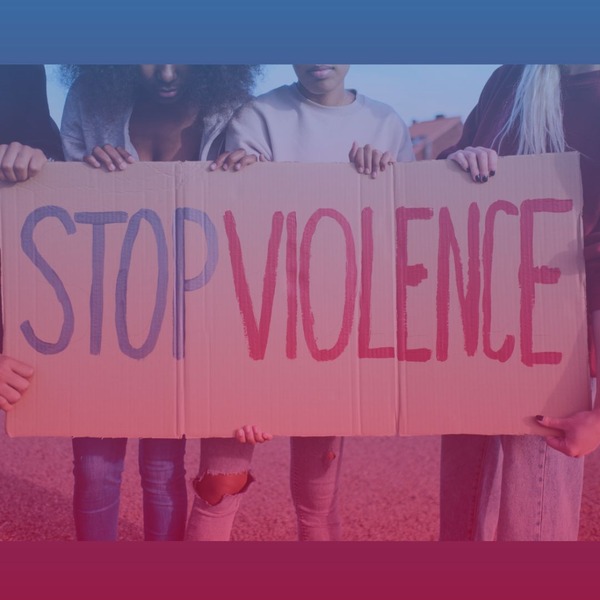
Written by: Elisa Mille, Working Group on Human Rights
Edited by: Martina Canesi
Executive summary
Sexual violence in conflicts represents an often invisible side of war, increasingly met with condemnation and efforts to combat it, including by the European Union. Placing itself as a model for the promotion of human rights, and having adopted strong rhetoric on conflict-related sexual violence, EU policies, and most importantly their implementation, have fallen short on expectations. This policy brief introduces the phenomenon of conflict-related sexual violence, and how the European Union has aimed to address it so far, before formulating recommendations. To truly hope to address this challenge that has existed in silence for centuries, the European Union must do better, aim higher, empower the right actors, and innovate.
Introduction
Sexual violence in conflicts has been waged as an invisible tactic of war, as a method of dehumanisation and oppression. Its use has been documented across the world for decades, from the Democratic Republic of Congo, Iraq, Myanmar, to Colombia and Ukraine: in most armed conflicts (United Nations Office of the Special Representative of the Secretary-General on Sexual Violence in Conflict, 2020; 2023). Patterns of conflict-related sexual violence have alarmingly persisted, entrenched themselves, and sometimes even been reinforced, but have been met with little attention from the international community (Anosova, 2023, p.1133; Pruitt, 2012, p.300). In order to be properly addressed, this invisible weapon must not remain as such. It is within this context that this policy brief analyses the policies that have been implemented by the European Union regarding conflict-related sexual violence, and what it could do more.
Conflict-related sexual violence is here defined as “rape, sexual slavery, forced prostitution, forced pregnancy, forced abortion, enforced sterilization, forced marriage, and any other form of sexual violence of comparable gravity perpetrated against women, men, girls or boys that is directly or indirectly linked to a conflict” (United Nations Office of the Special Representative of the Secretary-General on Sexual Violence in Conflict, 2023). The European Union itself declares that “sexual violence in conflict obliterates humanity”, “annihilates human beings, destroys communities, and hampers post-conflict recovery” (European Union External Action Service, 2022; 2023). As will be explained, its policies aimed at preventing and sanctioning the phenomenon and at supporting survivors, have, however, remained highly limited, and arguably flawed. This policy briefs first describes conflict-related sexual violence as a global, multi-faceted, and largely unaddressed issue, and what the European Union has implemented on this issue. Policy recommendations are then formulated, aimed at rendering European policies on the subject more effective, inclusive, and comprehensive.
Policy description and background
1. Conflict-related sexual violence and the fight against it
A climate of impunity has been existing around conflict-related sexual violence, and more generally gender-based violence, which must be broken to effectively prevent the phenomenon, prosecute the perpetrators, and support the victims (Pruitt, 2012, p.300). The international community has increasingly pledged to address the issue as the evolution of technology and social media contributed to the greater visibility of such crimes, and as international law gained political importance (Ibid). Sexual violence has been recognised as possibly constituting a war crime, crime against humanity or constitutive act with respect to genocide (United Nations Security Council Resolution 1820).
Sexual violence in conflict represents a multifaceted phenomenon with complex and diverse possible origins. It may arise as an opportunistic assault, a deliberate tactic of war, and/or as a result of social-cultural factors in relation to conflict (Stachow, 2020, p.183). Empirical examples of sexual violence as a means of political control, humiliation, and social domination include women being targeted to punish alleged political activities of their husbands in Haiti or Bosnian Muslim women being held in “rape camps” in Bosnia and Herzegovina to ensure that they became pregnant with children of Serb ethnicity in the 1990s (Stachow, 2020, pp.183-184). Sexual violence has also been motivated by an intent of gaining power of the victims and their communities, instigating entrenched fear, and degrading and dehumanising opponents (Biason & Vlachova, 2005). Sex has also been presented by some actors to soldiers or conceived by soldiers as a reward, and sexual violence been waged opportunistically against vulnerable people, explaining for instance the extensive reports of attacks in refugee camps (Bastick, Grimm and Kunz 2007). It entails far-ranging consequences on victims, including physical trauma, psychological trauma, ostracism from their communities and even murder for being a dishonour to the family, pregnancy and its related issues (Stachow, 2020, pp.184-185).
2. European policies and actions on conflict-related sexual violence
The European Union has strongly condemned conflict-related sexual violence, and has implemented several measures aiming to address it, notably as part of the Gender Action Plan III, the European Consensus on Humanitarian Aid, and the Strategic Approach on Women, Peace, and Security (European Commission, 2022). It provided around 44 million Euros to sexual and reproductive services in humanitarian crises in 2019-2020, usually within broader aid packages (European Commission, 2022). Key goals of those frameworks include the integration of gender-based violence risk mitigation in all humanitarian plans, capacity building of staff and partners, advocacy efforts, and direct support to survivors (European Commission, 2022). The European Union has undertaken several projects to support “gender-sensitive transitional justice” (Statement by the Representative of the European Union to the United Nations Security Council 8234th meeting) in Kenya, Kosovo, Colombia and the Philippines, and to strengthen the capacities of military courts in the Democratic Republic of the Congo. Such efforts can only be acclaimed, and demonstrate the willingness of the European Union and its Member States to act on their pledge to tackle conflict-related sexual violence.
European policies regarding conflict-related sexual violence have, however, remained extensively criticised by the academic and humanitarian spheres, for easily understandable reasons. The European Union had, at first, not envisioned transformative strategies to fight the structural causes of the phenomenon, nor dedicated entire policies or constituencies to the subject (Anosova, 2023, p.1133). Rather, it has limited itself to adding a “gender-based violence” perspective to its more general frameworks. This, in part, explains the flaws presented in more detail throughout the following policy recommendations. Although the European Union pledged to achieve considerable goals regarding conflict-related sexual violence, results as of now have also been limited, and its policies have arguably been developed and applied in a discriminate way. Significant efforts have been made in Ukraine, for example, while they remain minimal in the Democratic Republic of Congo and others (United Nations Office of the Special Representative of the Secretary-General on Sexual Violence in Conflict, 2023). At the same time, most European States support Israel, found to have used sexual violence against Palestinian populations (Israel’s Escalating Use of Torture against Palestinians in Custody a Preventable Crime against Humanity: UN Experts, 2024).
As it is clear that more can be done, and must be done, if the European Union ever is to make a significant contribution to the fight against conflict-related sexual violence, five key recommendations are proposed.
Policy recommendations
1. A greater inclusivity of all genders and LGBTQIA+ persons within the discourse on conflict-related sexual violence as well as relevant policies.
Conflict-related sexual violence, like all forms of sexual violence, overwhelmingly impacts girls and women, but not exclusively (United Kingdom Independent Commission for Aid Impact, 2020). The European Union and more largely the international community, have usually been presenting the phenomenon as a gender-based issue, and aimed to address it through such a perspective (European Commission, 2022). A female-focused approach leads to a dangerous dichotomy between visible and invisible victims, and thus to structural discrimination (Philo Gorris, 2015). Overlooking the impact on men, boys, and LGBTQIA+ communities entails great risks for them, hinders progress in fighting conflict-related sexual violence against them, and further contributes to their marginalisation and stigmatisation.
The European Union can recognise the disproportionate impact the phenomenon has on girls and women, without forgetting the rest of its victims, and can have gender-specific policies without looking at sexual violence in conflicts exclusively from this perspective. It should strive to openly denounce and fight conflict-related sexual violence on boys and men and LGBTQIA+ communities, and the stigma they often face. This is especially true in countries where patriarchal and homophobic beliefs are predominant. The rest of the recommendations made in this policy brief should be applicable and applied to all survivors.
2. Policies specifically addressing conflict-related sexual violence, and more actively aimed at empowering local actors conducting prevention, recovery, and rehabilitation work.
Conflict-related sexual violence, although part of a continuum of (sexual) violence, an issue predominantly impacting girls and women, is a separate concept and challenge. While a lot remains to be studied on the subject, it has been found to entail very different dynamics than sexual violence in peacetime, and compared to other gender-based forms of violence (Jean Wood, 2015, p.464). Rapes by multiple perpetrators has, for example, been found to represent the overwhelming majority of rapes during wartime (estimated at 90% in 2005), contrary to those in peacetime (Biason & Vlachova, 2005). The fight against conflict-related sexual violence would therefore highly benefit from policies specifically on the subject, separating conflict-related sexual violence from other forms of sexual violence happening during peacetime, and from other forms of violence in conflicts. This would allow it to become more precise, survivor-centred, and benefit from greater public and political attention. This would also contribute to ensuring that conflict-related sexual violence is conceived as an entire issue which must be tackled in itself, instead of adding measures against sexual violence in conflicts to more general policy documents on conflicts, women’s rights, etc. (European Commission, 2022).
In the fight against conflict-related sexual violence, local actors, including non-governmental organisations and United Nations peacekeeping forces, represent crucial links between victims and international actors, like the European Union. Local agents are also the first to be able to prevent such crimes and help their survivors thanks to their direct contact with the population, and experience on the ground. A majority of resources should be dedicated to empowering them, precisely by supporting their current actions and facilitating the implementation of new projects, through funding, formation, and the provision of material. Potential solutions include the development of patrols who could escort vulnerable populations and guard vulnerable areas, the expansion of hospitals and healthcare facilities for survivors, including mobile ones, and local education campaigns on the subject.
3. A more direct and active support for survivors, including those seeking asylum within the European Union.
The European Union has strongly condemned conflict-related sexual violence and pledged its full support to survivors, until they seek direct help. Victims of conflict-related sexual violence fall within the realm of the 1951 Geneva Convention, and thus can qualify for the status of refugee, granting specific protection and rights (Romay Uranga, 2021, p.32). The relative legal framework of the European Union allows them to benefit from such protection and safe haven, but its inward application has clearly been disappointing (Romay Uranga, 2021, p.45). The number of refugees has been highly limited, and has been further endangered by the rise of far-right parties within Europe. This has been to the detriment of survivors who have flown conflicts and the persecutions they were facing, including sexual violence.
Similarly to previous recommendations, the European Union should dedicate considerable means to ensuring that survivors of conflict-related sexual violence are receiving healthcare and social and legal support, including in the aftermath of the conflict, whereby the victims do not disappear. While prevention is essential, relieving and rehabilitating those who already suffered remains just as vital. A lack of support holds consequences for them and their communities. It risks becoming a local or national issue to a larger scale, as survivors bear trauma, require medical and financial assistance, and are marginalised notably from the workforce and education (United Nations Women, 2010, p.16).
4. More intensive efforts to limit arms proliferation and funding, especially to non-state actors, and to stop empowering actors whose use of conflict-related sexual violence has been documented.
No substantive progress regarding conflict-related sexual violence can be achieved without ending the culture of impunity that perpetrators currently benefit from (Pruitt, 2012, p.303). In total, the European Union has implemented sanctions against 61 individuals and 20 entities under the Global Human Rights Sanction Regime, among which only a few are motivated by sexual and gender-based crimes (European Council, 2023). That is completely disconnected from the reality on the ground, as the United Nations has been publishing lists of dozens of armed actors found to have resorted to sexual violence every year, through its investigations (United Nations Office of the Special Representative of the Secretary-General on Sexual Violence in Conflict, 2023). The European Union could therefore widen its sanctions against such actors if it had the willingness to do so (and it should), based on the work of the United Nations. In relation to sanctioning unlawful actors, the European Union should give much more attention to stopping them, limiting their capabilities, and encouraging other countries to join its efforts. It should impose arm embargoes on actors found to have used sexual violence as a tactic of war by the United Nations, minimise trade and economic relations, and publicly denounce such groups.
While this will not guarantee that conflict-related sexual violence is prevented, such measures should incentivise perpetrators, particularly when sexual violence is waged as a systematic tactic, to reconsider their choice. Besides the fact that arms are often used to facilitate sexual violence, those armed actors are dependent on weapons and funding to survive. Most also care about their public image, which remains important in times of conflicts to gain the support of local populations and the international community. This image would suffer from a public denunciation of their crimes, and from the symbolic costs of being sanctioned for them.
5. Monitoring initiatives, global and focused on conflict areas, to develop a more accurate representation of the phenomenon and its dynamics.
While human rights and women rights organisations, including the Office of the Special Representative of the Secretary-General on Sexual Violence in Conflict and the International Crisis Group have undertaken important monitoring and reporting efforts, those remain insufficient. Field experience has demonstrated that the number of cases in conflict zones is likely to be 10 to 20 times those reported (The Economist, 2009). The lack of data has been widely presented by researchers as a key barrier to their work ( Pruitt, 2012, p.317; Stachow, 2020, p.184; Romay Uranga, 2021, p.41). Scholarly work has also been developed on how sexual violence in conflict varies depending on the conflicts and actors, notably targeting different populations, and using different forms of sexual violence (rape, enforced sterilisation, sexual slavery,…) (Jean Wood, 2015, p.458). The European Union, including within the framework of its peacekeeping and humanitarian activities and alongside other actors, should make the monitoring of victims of sexual violence, its perpetrators, and forms of violence waged, a priority.
The development of new monitoring initiatives and instruments should especially take advantage of new technologies, and be based on local actors (public and private) who can act as crucial links between victims and governmental and intergovernmental actors. Obtaining exact numbers is not the aim, and will never be possible due to the nature of the subject. But being able to distinguish trends in the use of sexual violence and its exact forms, to identify conflict zones and perpetrators, including groups systematically employing it, would foster advances in the area. It would support academic research, more accurate policies, and, perhaps most importantly, the direct prosecution of identified perpetrators and support of identified victims. Monitoring efforts should continue following the end of the war, as it has been proven that sexual violence dynamics persisted through post-conflict recovery (UN Women, 2010, p.18).
Conclusion
Conflict-related sexual violence has been existed for centuries, perpetuated in a culture of impunity and collective silence. The European Union, through its size, political importance and resources, has the potential to foster considerable change, and, despite the flaws of its policies, has demonstrated a certain willingness to act on its promises. To truly turn those promises into reality and render its policies more effective, impactful, and inclusive, five key propositions can be made. The European political framework and discourse on the subject should be more inclusive of boys and men, and LGBTQIA+ communities. Such policies should also be more subject-specific and survivor-centred, aimed at empowering local actors, and directly supporting victims. They should simultaneously strive to limit the resources of armed groups found to use sexual violence. Monitoring efforts will finally be key to render all other measures more effective, and gain a better understanding of this phenomenon which we still do not understand enough.
References
Addressing conflict-related sexual violence: An analytical inventory of peacekeeping practice. (2010). United Nations Women. https://www.unwomen.org/sites/default/files/Headquarters/Media/Publications/UNIFEM/0502_AnalyticalInventoryOfPeacekeepingPractice_en.pdf
Anosova, I. (2023). Battles on different fronts: the role of the EU in strengthening the response of Ukraine to gender-based violence, including conflict-related sexual violence, since Russia’s invasion. European Papers, 8(3). https://www.europeanpapers.eu/it/system/files/pdf_version/EP_EF_2023_I_036_Iuliia_Anosova_00707.pdf#page36
Bastick, M., Grimm, K., & Kunz, R. (2007). Sexual Violence in armed Conflict : Global overview and implications for the security sector. Centre For The Democratic Control Of Armed Forces.
Biason, L., & Vlachová, M. (2005). Women in an Insecure World: Violence against women: Facts, figures and analysis. Geneva Centre for the Democratic Control of Armed Forces.
Conflict-related sexual violence and the UK’s approach. (2023). United Kingdom House of Commons. https://researchbriefings.files.parliament.uk/documents/CBP-9577/CBP-9577.pdf#page36
Conflict-related sexual violence: report of the United Nations Secretary-General. (2020). Office of the Special Representative to the Secretary-General on Sexual Violence in Conflict. https://www.un.org/sexualviolenceinconflict/wp-content/uploads/2020/07/report/conflict-related-sexual-violence-report-of-the-united-nations-secretary-general/2019-SG-Report.pdf
Conflict-related sexual violence: report of the United Nations Secretary-General. (2023). Office of the Special Representative of the Secretary-General on Sexual Violence in Conflict. https://www.un.org/sexualviolenceinconflict/wp-content/uploads/2023/07/SG-REPORT-2023SPREAD-1.pdf
EU Statement- UN Security Council: Open debate on conflict related to sexual violence. (2023, July). European Union External Action Service. https://www.eeas.europa.eu/delegations/un-new-york/eu-statement-%E2%80%93-un-security-council-open-debate-conflict-related-sexual-violence_en?s=63#:~:text=EU%20support%20to%20eliminating%20and,the%20scope%20of%20their%20mandates.
EU Submission to Report on promoting, protecting and fulfilling women’s and girls’ full enjoyment of human rights in humanitarian situations. (2022). European Commission. https://www.ohchr.org/sites/default/files/2022-02/EuropeanUnion.pdf
Gorris, E. A. P. (2015). Invisible victims? Where are male victims of conflict-related sexual violence in international law and policy? European Journal of Women’s Studies, 22(4). https://doi.org/10.1177/1350506815605345
Human rights violations: EU lists 18 individuals and five entities responsible for gender-based violence and linked to the Navalny and Kara-Murza cases. (2023, July). European Council. https://www.consilium.europa.eu/en/press/press-releases/2023/07/20/human-rights-violations-eu-lists-18-individuals-and-five-entities-responsible-for-gender-based-violence-and-linked-to-the-navalny-and-kara-murza-cases/
Israel’s escalating use of torture against Palestinians in custody a preventable crime against humanity: UN experts. (2024, August). Office of the High Commissioner for Human Rights. https://www.ohchr.org/en/press-releases/2024/08/israels-escalating-use-torture-against-palestinians-custody-preventable
Jean Wood, E. (2015). Conflict-related sexual violence and the policy implications of recent research. International Review of the Red Cross, 96(894). https://doi.org/10.1017/S1816383115000077
Litterature Review: Conflict-related sexual violence and sexual exploitation and abuse. (2020, September). United Kingdom Independent Commission for Aid Impact. https://icai.independent.gov.uk/html-version/psvi-2/
Pruitt, L. (2012). Looking Back, Moving Forward: International Approaches to Addressing Conflict-Related Sexual Violence. Journal of Women, Politics & Policy, 33(4). https://doi.org/10.1080/1554477X.2012.722430
Romay Uranga, P. (2021). Victims of sexual violence in armed conflicts and their protection as asylum seekers in the European Union. https://repositorio.comillas.edu/xmlui/bitstream/handle/11531/50001/TFG%20Romay%20Uranga%2C%20Paloma.pdf?sequence=1&isAllowed=y
Sexual violence, the most despicable weapon in conflicts. (2022, June). European Union External Action Service. https://www.eeas.europa.eu/eeas/sexual-violence-most-despicable-weapon-conflicts_en
Stachow, E. (2020). Conflict-related sexual violence: a review. BMJ Military Health, 166(3). https://militaryhealth.bmj.com/content/jramc/166/3/183.full.pdf
Statement by the Representative of the European Union, Mr. Van Den Akker. (2018, April). United Nations Security Council. http://peacewomen.org/sites/default/files/EU_4.pdf
Strengthening the Response to Conflict-Related Sexual Violence. (2023, July). International Crisis Group. https://www.crisisgroup.org/strengthening-response-conflict-related-sexual-violence
Unleashing the laws of war. (2009, August). The Economist. https://www.economist.com/international/2009/08/13/unleashing-the-laws-of-war

 The ’Ndrangheta’s Infiltration and Threat to European Institutions
The ’Ndrangheta’s Infiltration and Threat to European Institutions  From Paper to Practice: How Grassroots Norms Undermine Gender Rights in Pakistan
From Paper to Practice: How Grassroots Norms Undermine Gender Rights in Pakistan  Exploited Childhoods: The Role of Global Corporations in Perpetuating and Mitigating Child Labour
Exploited Childhoods: The Role of Global Corporations in Perpetuating and Mitigating Child Labour  Human Rights Challenges in Addressing SLAPPs in Media, NGOs and Journalism in the EU
Human Rights Challenges in Addressing SLAPPs in Media, NGOs and Journalism in the EU 


